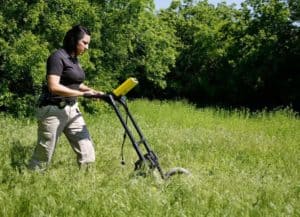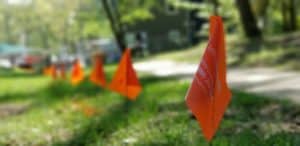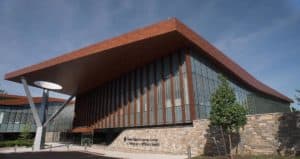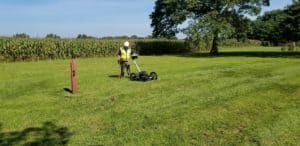Ground Penetrating Radar is a great tool for locating underground utilities and structures, but it can have a big impact locating other underground objects as well. GPR technology is non-invasive, which means that it does not disturb the objects that are buried below. In addition to locating underground utilities, GPR is becoming more and more popular in the Forensic Investigations arena as an important tool to help law enforcement save time and save money.
GPR can provide powerful insight to forensics specialists conducting detailed subsurface site investigations. GPR locates bodies, buried caches, weapons or tunnels. Ground penetrating radar can aid in ruling out suspect areas in minutes.
Quote from: GPRforForensics.com
How does GPR detect clandestine graves?
GPR works by emitting radar frequency pulses into the ground. Objects buried in the ground will reflect the frequency back to the radar unit. This works very similar to the radar used in speed detection. The frequency will reflect back to the radar unit at a different velocity (speed) based on the conductivity of the objects below. The helps the GPR unit detect buried victims and other forms of evidence because the objects will have a much different conductivity than the native soil surrounding the object.
GPR is particularly effective in detecting victims that have been wrapped in plastic or other type of fabric lining as the surface provides a better reflection of the radar waves, and also helps to slow the decomposition process.
Ground Penetrating radar, while valuable, is not perfect. There are many limiting factors that could reduce the effectiveness of the technology to detect buried objects. The depth and size of the object, as well as the surrounding earth materials could either help, or hinder the discovery process. Small targets that are not intact can be the most challenging to find. Clandestine graves where only skeletal remains are present can be difficult to identify as well, as much of the body mass has decayed away and there is not a great deal of surface left for the radar to reflect off of.
Excavating is Destructive
Excavating clandestine graves and other areas for buried evidence is destructive, and a huge amount of risk exists for law enforcement agencies to disturb or contaminate the scene. Excavating is a slow process because of the risk to damage or compromise evidence. Heavy machinery can easily damage delicate objects buried below the surface. In some instances, excavating by hand with shovels has been known to compromise evidence. Ground Penetrating Radar is a popular solution because it can be pushed along the ground surface without disrupting any buried objects or evidence below.
How does a GPR Survey save time & money?
 Using ground penetrating radar to detect clandestine grave sites and other buried evidence can help law enforcement agencies save time and money with a non-invasive scan of the crime scene. GPR can be pushed along the surface to help identify specific targeted areas for further investigation. It can detect areas that have objects buried below, as well as areas that have been recently disturbed or have non-native soils present.
Using ground penetrating radar to detect clandestine grave sites and other buried evidence can help law enforcement agencies save time and money with a non-invasive scan of the crime scene. GPR can be pushed along the surface to help identify specific targeted areas for further investigation. It can detect areas that have objects buried below, as well as areas that have been recently disturbed or have non-native soils present.
It helps to remove the guesswork out of excavating locations based on limited or no evidence. GPR technicians can typically scan a 1-acre property in a day or less, and can provide specific locations of objects that have been detected. This helps narrow the search for law enforcement investigations had drastically reduces the amount of time spent searching for evidence.
Spending less time in the search for evidence will ultimately save money. Solving cases faster will help convict offenders quicker, making our streets safer not just for the general public, but for everyone.









